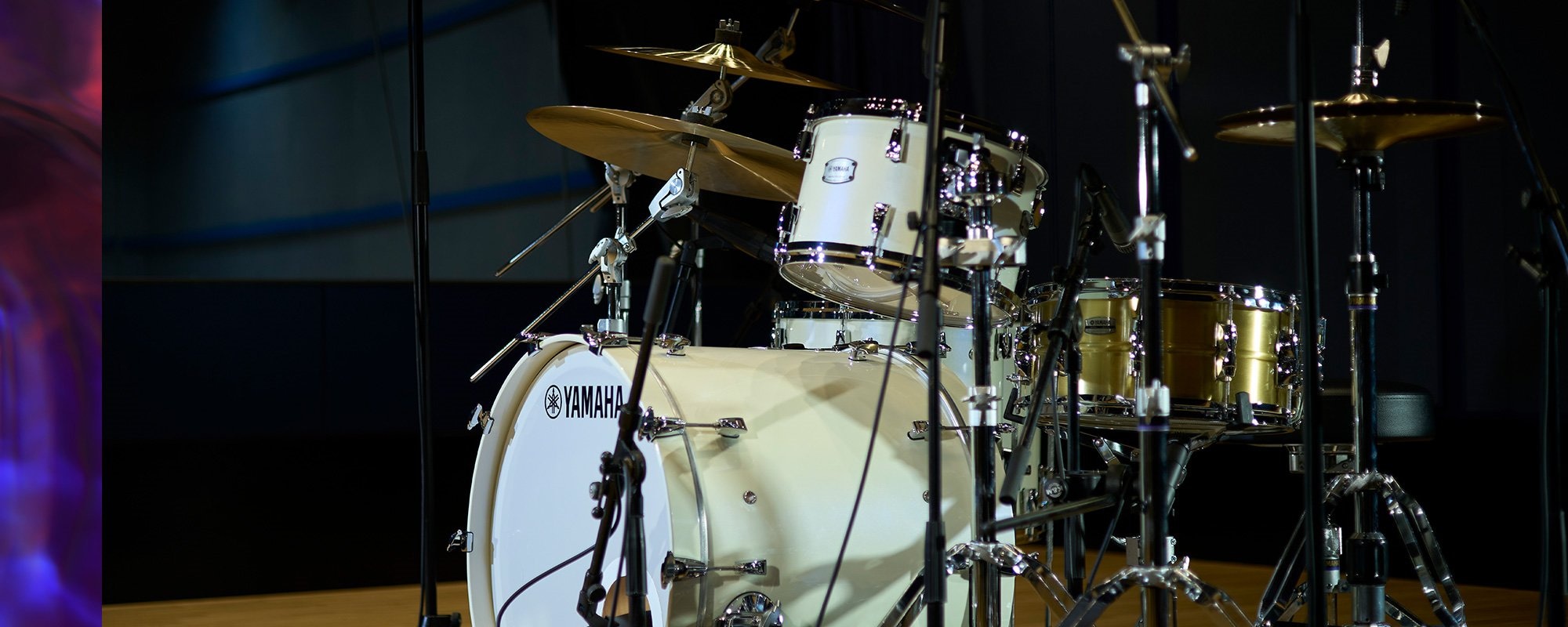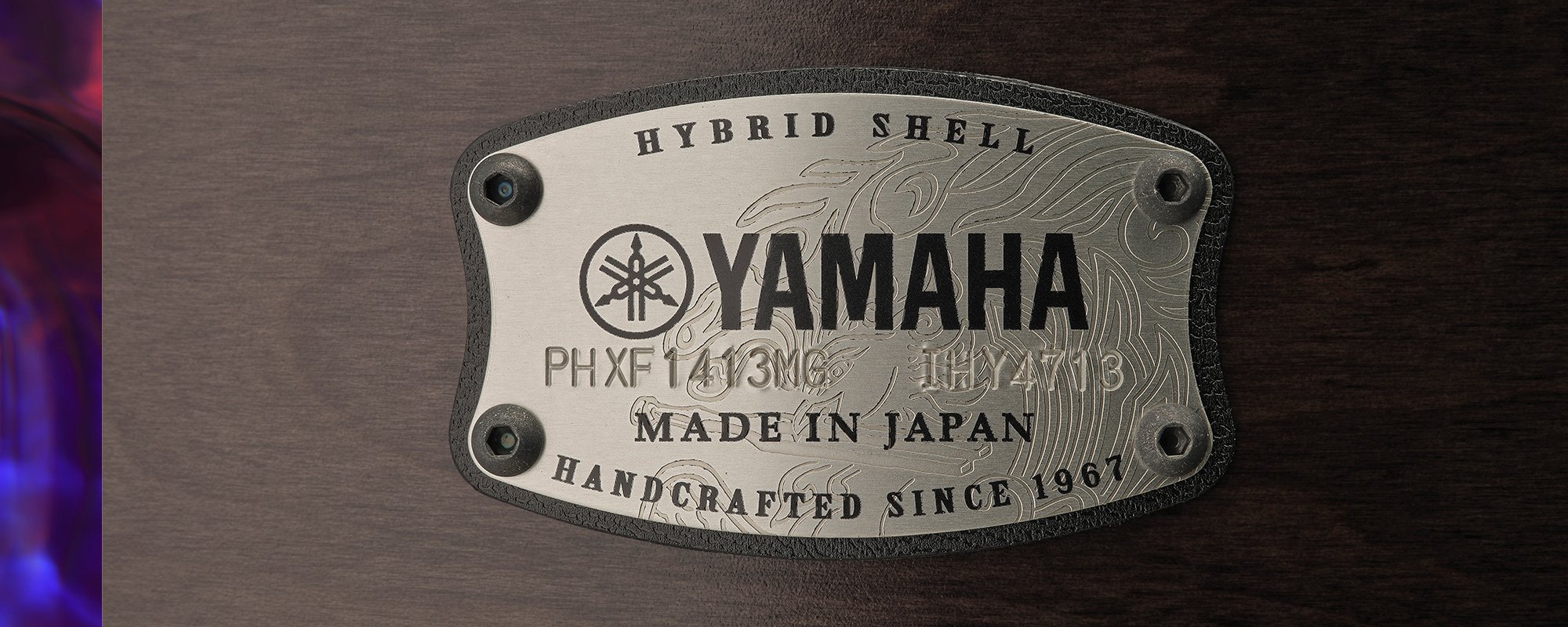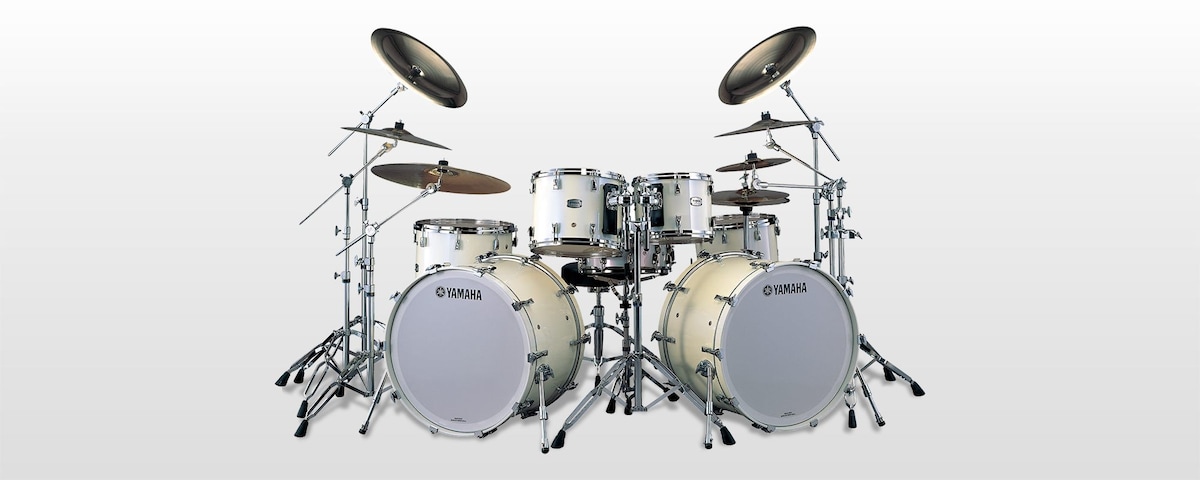PHX
Hybrid Shell
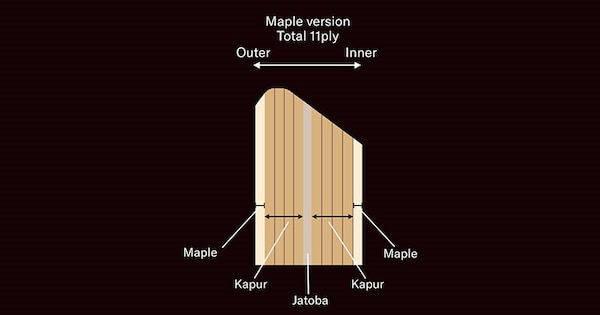
Hybrid Shell
With the wealth of knowledge that Yamaha has amassed through the decades as the preeminent manufacturer of musical instruments, Yamaha’s wood specialists have discovered new materials which have increased the optimal shell performance of PHX.
Jatoba, the hardest material in the PHX hybrid shell, is positioned at the core of the shell, and is responsible for the fundamental note of the drum. The Jatoba is surrounded on either side by layers of Kapur. Then Maple, which had long been considered a classic, drum shell material because of its hardness, is used on the outer and inner plies of the shell. Maple is usually thought of as the perfect hardwood for drum shells, but in the PHX shell it is actually the softest, and allows the note of the Jatoba to ring clearly.
Bearing Edge
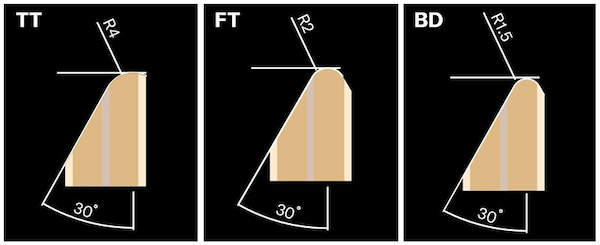
Bearing Edge
To focus each drum’s tone and articulation, PHX floor toms, toms and bass drum shells each use a different type of bearing edge. All bearing edges are cut to 30-degrees. However, the radius of each bearing edges differs to maximize the acoustic performance from each shell.
The bass drum radius is chosen to deliver a sharper, punchy sound, while the tom radius produces a richer, rounded tone. Additionally, a secret process is used to ensure that each edge is finished to a perfect smoothness. This guarantees a wide tuning range and allows accurate and easy tuning.
Vent Holes
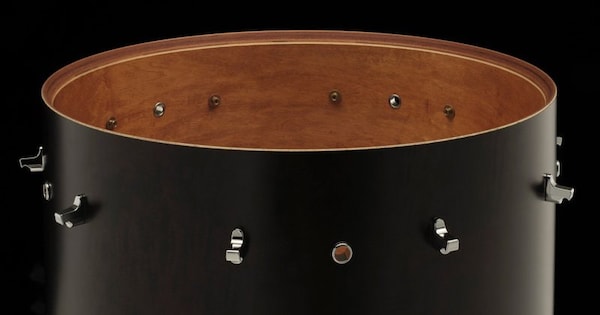
Vent Holes
The number of vent holes in a drum shell influences both the drum’s timbre and projection. PHX drums are designed with one to ten vent holes, depending upon the drum's dimensions. By varying the number of holes, particularly on larger shells, the drum’s decay length, amount of mid-bass tone, and playing comfort can all be fine-tuned.
Y.E.S.S.II
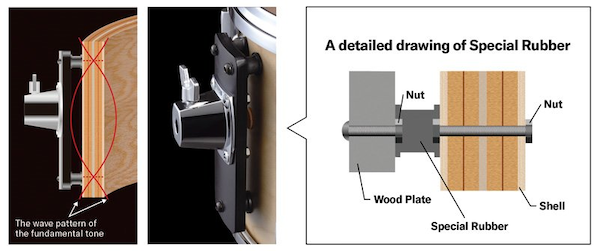
Y.E.S.S.II
The Y.E.S.S.II shell mounting system acts as a shock-mount system for the PHX drums allowing for optimal shell vibration.
Utilizing a unique rubber insert and a maple mounting plate, the Y.E.S.S.II system is attached at the nodal points of each shell where the least vibration occurs. This allows the resonance to stay within the shell, rather than transferring through the hardware and being dampened.
In larger tom sizes, the rubber inserts are also positioned on the shell where less desirable overtones are present so the appropriate mixture of decay and overtone control can be tailored to suit the shell.
Hook Lug
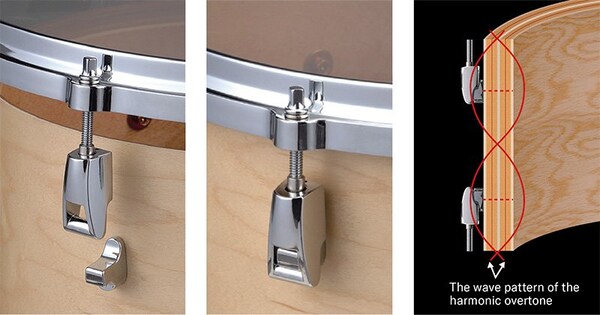
Hook Lug
The Hook Lug system used on the PHX range has evolved from the Yamaha Nouveau Lug, which was an innovation in drum-lug design. This new design minimizes the rotation of the lug casing during tuning, and firmly supports the tension rod, even at high tension.
Rather than positioning the Hook Lug at the nodal point, Yamaha placed it at the area of the shell that produces less desirable overtones, thus muting them and allowing for an unobstructed, richer fundamental tone.
3.0mm Aluminum Die-Cast Hoops
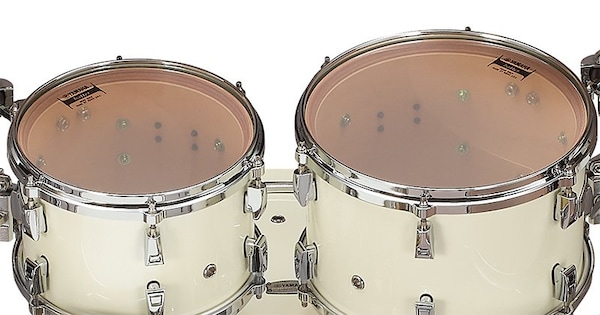
3.0mm Aluminum Die-Cast Hoops
The aluminum die-cast hoops are designed and produced using an original process developed by Yamaha. The 3.0mm aluminum die-cast hoop offers precision tuning, thanks to its rigidity, which comes from the unique die-casting process, and light weight, due to the aluminum material itself. While normal zinc die-cast hoops are heavy and suppress head vibration, Yamaha’s light-weight hoop design produces a rich, melodic tone and moderate attack, without suppressing the head vibration.
The Finish
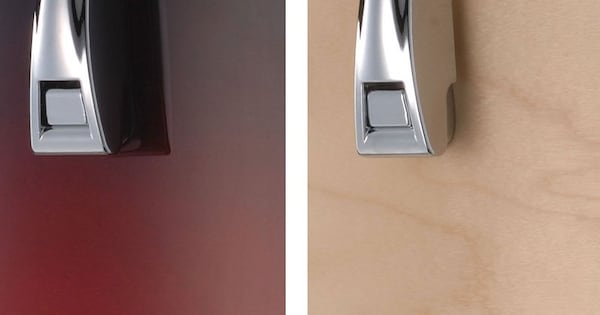
The Finish
PHX drums come in gloss or matte finishes. High quality finishes are one of the defining characteristics of Yamaha drums, and they require extremely high levels of know-how and experience to perfect. Yamaha has drawn from its broad knowledge and experience of finishing beautiful musical instruments to create the PHX finishes.
The creation of beautiful glossy finishes requires that every step of the process – consistent application of coatings by wiping and spraying, combined with meticulous sanding and buffing – be carried out by hand, with care and competence that can only be acquired through many years of practice.

